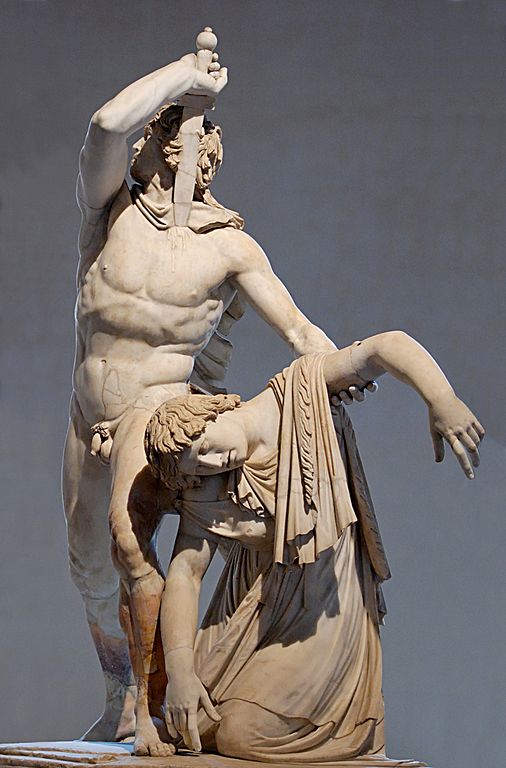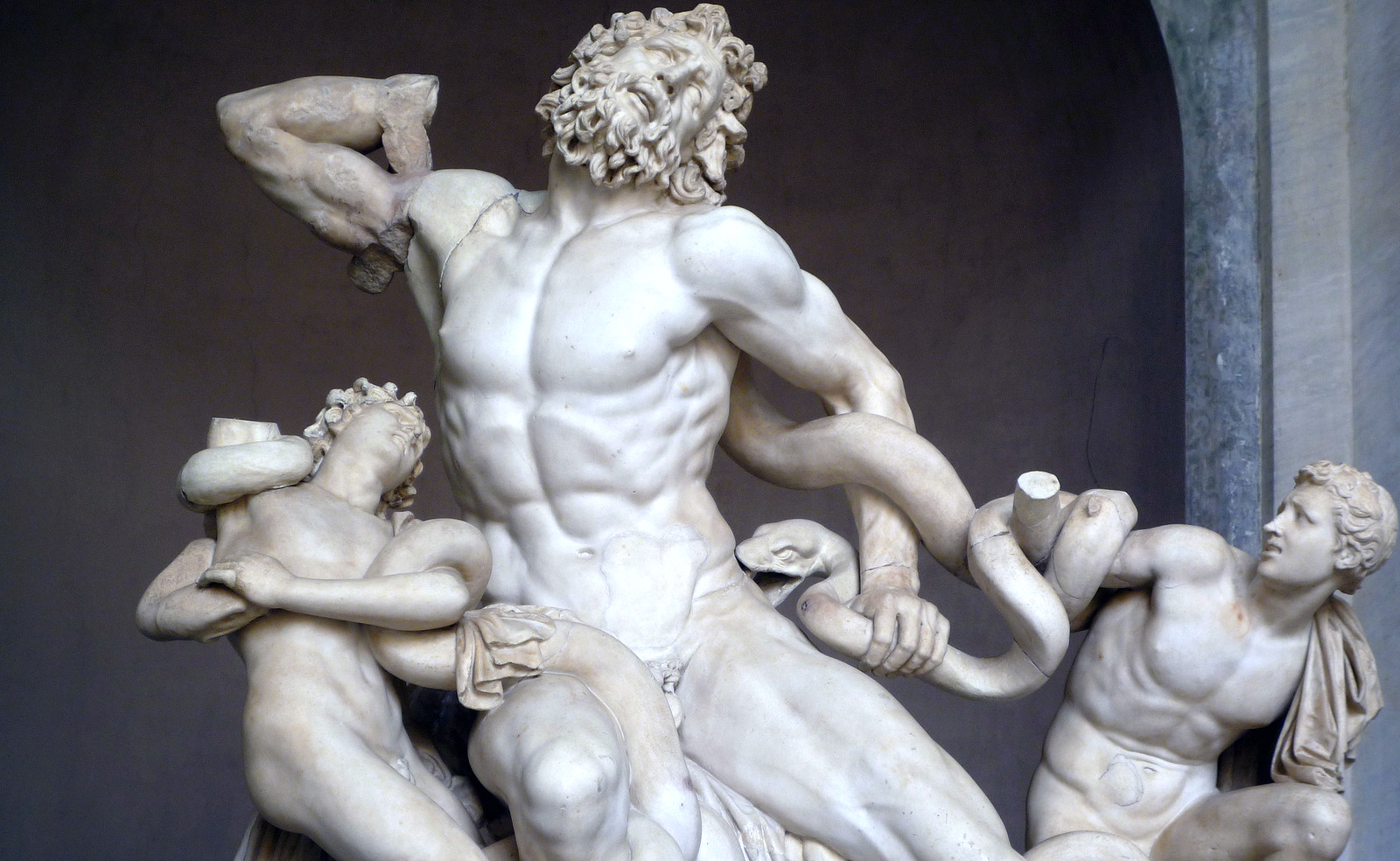Which Words Best Describe the Hellenistic Style of Greek Art
20 BCE to 20 CE Greek Hellenistic Period. The piece of architecture that is from the Hellenic period is the Parthenon.

The Hellenistic Period Boundless Art History
Characteristic of the Bronze Age Mycenaean culture of the eastern Mediterranean area.

. But shared a style of civilization just as the inhabitants of the Hellenistic kingdoms followed the collective Greek culture. Why did prehistoric people view a larger figure as beautiful. The classic sculptures do not come with these emotions but were idealized or static.
Hellenistic Art followed the Classical Greek Period of Art. The Hellenistic Age 336-30 BC from Alexanders crowning to the death of Cleopatra The word Hellenistic comes from the root word Hellas which was the ancient Greek word for Greece. Ancient Greek art stands out among that of other ancient cultures for its development of naturalistic but idealized depictions of the human body in which largely nude male figures were generally the focus of innovation.
Yet this would come as a result of Alexanders influence. It showed how much a person could eat. 2The Hellenistic art form is seen to be depicting more emotions.
Both the Hellenic and Hellenistic periods offer differences in their architecture. 124 writers online. These images as well as the portraits of ethnic people especially those of Africans describe a diverse Hellenistic populace.
Of relating to or characteristic of Mycenae its people or the period 1400 to 1100 bc of Mycenaes political ascendancy. It ended with the absorption of Greece into the Roman Empire in the second century BCE. These include the over all design their building techniques the location how they are decorated and the symbolism related to the temple it self.
It is derived from the word Hellazein which means to identify with the Greeks. The rate of stylistic development between about 750 and 300 BC was remarkable by ancient standards and in surviving works is best seen in sculpture. Tholos style temples c.
A growing number of art collectors commissioned original works of art and copies of earlier Greek statues. The Hellenic Age was the time when Greek culture was pure and unaffected by other cultures. The new art was termed Hellenistic because while it was very similar to art made by the Greeks who called their homeland Helles it was combined with other cultures and not purely Greek hence.
Images formed by small colored stone or glass pieces tesserae. Portraying the dramatic features that are filled with happiness anger agony and humor. The term Hellenistic was coined by historians as late as the 19th century.
Aristotle sensed that realism and possibility the authentic and the fictitious could ail exist simultaneously. A Golden Nike from the Athenian Agora -- subjects. Dramatic composed restrained lifeless.
Or Roman Imperial Laocoon warned Trojans of the Greeks Athena set snakes on him tale of reversal of fate focuses on an individual and personal fortune and downfall. Roman temple design during the Republican period reflected the colossal design of the Greek Hellenistic style. 92 also argues that during the Hellenistic period the Greek had influenced the world with their artistic style and it.
Despite their Roman audience these were purposely created in the Greek style and continued to display the drama tension and pathos of Hellenistic art. In the late 20th century sovereign states existed. With the Persian conquest the classical age ended.
This is known as the Hellenistic period. 92 the word Hellenistic is derived from the word Hellene which means an ancient Greek. It is typically dated as beginning after the death of Alexander the Great in 323 BC.
The idea of life after death was relatively unimportant to the Greeks. This era was marked by a great deal of progress particularly in the field of art. The classical style is more realistic and includes the representation of movement.
Points 1 check Correct 6. Ideals of balance harmony and physical perfection were central to Greek art and culture especially during the Classical period. The Hellenistic style gives over to the results of centuries of the Greek study of the human form.
As the first evolution of the architectural Orders the Doric style is plainer and described as austere. Small pieces of stone or glass to create a mosaic. Which of the following is uniquely Greek in style and was imported to Rome in the first century BCE.
INTRODUCTION According to Sporre 1989. Rectangular shaped temples b. The Hellenistic Period began following the death of.
Mimesis imitation of nature the nude human figure man is the measure of all things or humanism architectural structural elements decorative motifs and types of buildings. Likewise increasingly affluent consumers were eager to enhance their private homes and gardens with luxury. This ArtHearty post chronicles the features and achievements of Hellenistic art.
Art that attempts faithful description of the appearance of th. What allowed Greek art from this period to shift so widely from predecessors has much to do with the Greeks themselves. Hagesandros Athanodoros and Polydoros of Rhodes Laocoön ca.
The archaic style is stiff and rigid. An Ancient Greek word such as enchancer or inomatée tecne meaning art handicraft technique or skill and that plays an important role in Ancient Greek philosophy eg. Which of the following words best describes Hellenistic sculpture.
The latter Ionic style was also prominent in the subsequent Hellenistic period from which the third Corinthian style also emerged. Greek Sculpture Nike Sculpture Greek Hellenistic pottery and terracottas -- subjects. Greek art established the basic themes forms and attitudes of Western culture.
Laocoön and His Sons Laocoön was a Trojan priest of Poseidon who warned the Trojans Beware of Greeks bearing gifts when the Greeks left a large wooden horse at the gates of Troy.

An Introduction To Hellenistic Art In 12 Works

Introduction To Ancient Greek Art Article Khan Academy

Hellenistic Greece Ancient Greece Timeline Definition History
No comments for "Which Words Best Describe the Hellenistic Style of Greek Art"
Post a Comment